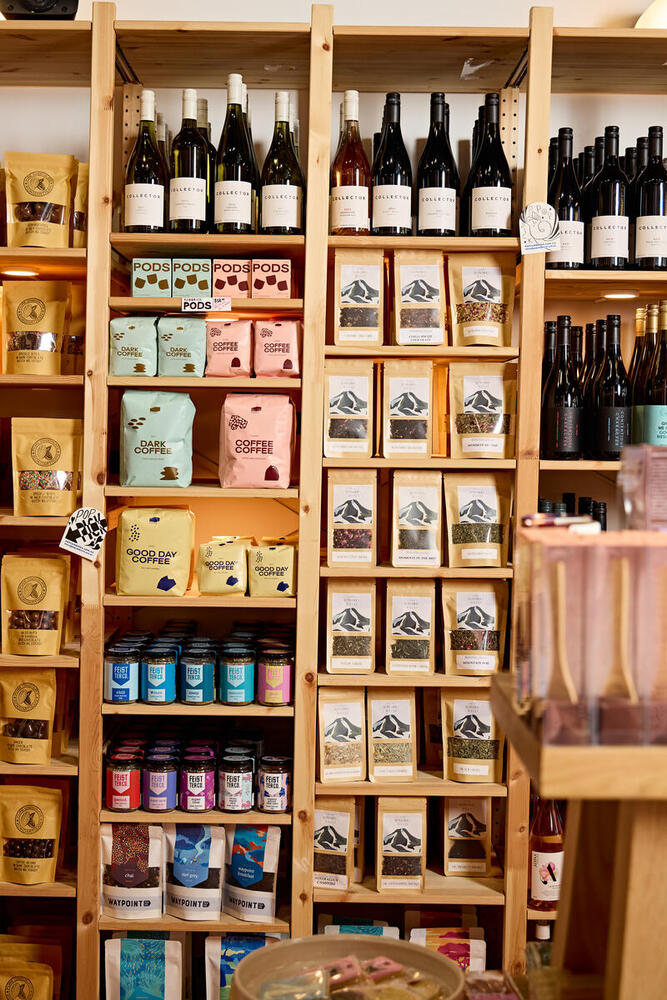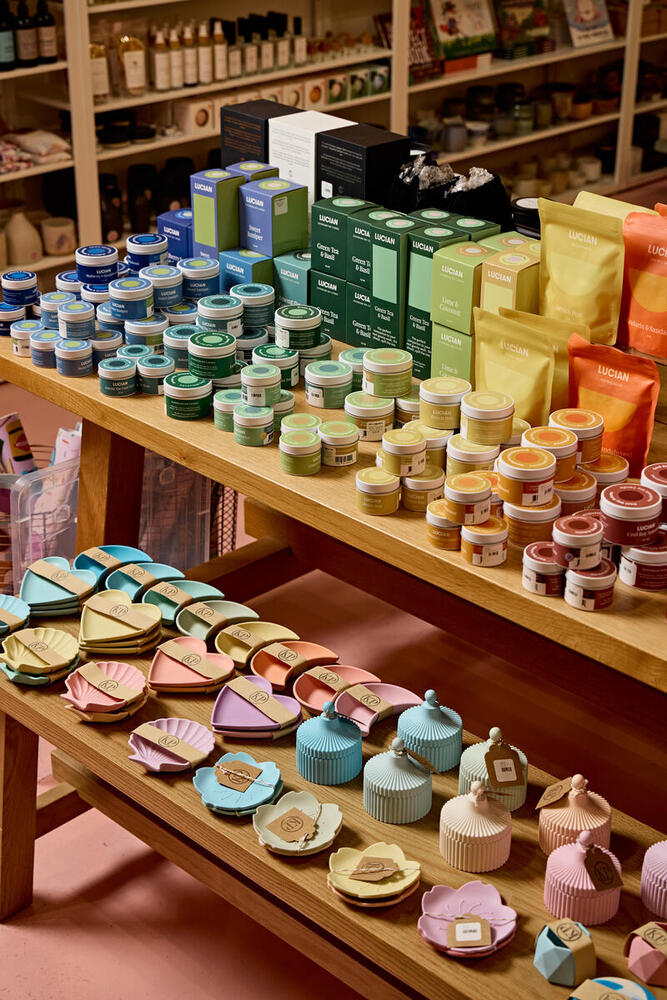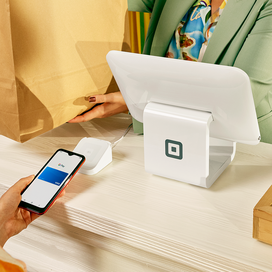Table of contents
According to a study by the Journal of Marketing, well-designed displays can drive sales up by 540%. Gaining that all-important advantage over other retailers can be just what you need to appeal to the consumer and make more sales. Strong visual merchandising can help you gain a competitive edge for your retail store. Let’s take a deep dive into planning, product placement, and how careful curation can make a world of difference.
What is visual merchandising?
Visual merchandising is the retail practice of displaying your merchandise in an appealing way to encourage customers to buy more products. It’s a proven fact that an attractive retail environment has the potential to increase sales. Visual merchandising encompasses more than just aesthetics and products — it’s also about advertising, brand awareness, displays, in-store layout, shopping experience, product promotion, and more. Product merchandising is essential to entice customers to buy and maximize sales.
Merchandising strategies
There’s no one-size-fits-all approach when it comes to merchandise management. What works for a competitor might not be a fit for your business or customers. The merchandising techniques you employ will depend upon your goals, whether they’re to increase sales, to raise brand awareness, to build customer loyalty, to increase foot traffic, or a little bit of everything. Some popular retail strategies include:
- Visual displays: creating unique, eye-catching window and in-store displays.
- Cross-merchandising: pairing complementary products together to increase multiproduct purchases.
- Free trials: Offer freebies to potential customers and clients — trials, samples, tastings, giveaways, and more.
- Strategic placement: carefully curating products where they’ll catch customers’ eyes.
- Stocked shelves: keeping shelves well-stocked by leveraging inventory management.
Visual merchandising strategies
The way you merchandise your store can have a huge impact on your bottom line. Consider some of these factors:
- Strategic layout and design: Clear pathways and seamless navigation can help customers move through more of your store easily.
- Effective use of lighting: Proper lighting can help light and highlight your products. Different colors can also evoke different emotions in your buyers. Research shows some colors can evoke feelings of joy, amusement, or contentment.
- Thematic displays: Aligning your displays with seasons, holidays, or other special occasions can pique your customers’ interest.
- Interactive elements: By using digital screens, interactive displays, or even new technology, such as augmented reality, shoppers can interact with your products. These tools can enhance the shopper experience and give you insights on your customers’ behavior.
- Branding: Visual merchandising is an opportunity to extend your brand’s identity and messaging for your in-store audience.



Benefits of merchandising
Appealing to the senses can give a retail store that extra wow factor and draw people in to browse. Even if customers aren’t in a buying mood when they enter a business, effective and on-brand merchandising helps in other ways that can lead to longer-term success.
- Brand-building: brand recognition and loyalty that make people want to tell others about your business.
- Customer engagement: more engaged shoppers who spend more time in-store.
- Greater customer satisfaction: positive in-store experiences can help you build up clientele and increase sales over time.
- Faster inventory turnover: reduced chance of dead stock and better inventory management.
Consider hiring a merchandiser
A merchandiser specialist will use their expertise to build retail displays that resonate with your target customer. They’ll have previous retail experience and plenty of ideas on how best to showcase your merchandising inventory favorably. A retail merchandiser will know to display the right products in the right quantities to influence shoppers and increase sales. Better still, they’ll create a merchandising plan you can implement throughout your retail outlets to maintain consistency. Hiring a merchandiser is an added expense, but one that could pay for itself by driving more revenue.
Merchandising FAQ
How important is visual merchandising?
Visual merchandising involves making your retail store visually appealing to attract customers. Visual merchandisers will consider the look of the store layout, signage, lighting, product displays, shopping experience, and window displays to maximize the impact on your target customers and influence them to buy.
What is considered merchandise?
Merchandise is any product or item a retailer sells to shoppers.
What is an example of merchandising?
In retail, a common merchandising example would be to create an eye-catching display at the store entrance. If it’s a clothing store, this will likely involve mannequins. For other retailers, such as bookstores or kitchenware suppliers, relevant props and products should be displayed.
Imagine the launch of a new novel with the books piled high and set against the backdrop of a scene inspired by the book. This will more engaging to your audience than simply displaying the book series in the window.

Ultimately, smart merchandising can make a huge difference in sales volumes and attract swarms of new customers. As a result, retailers looking to grow and outcompete similar stores should aim to optimize their merchandising.
![]()












